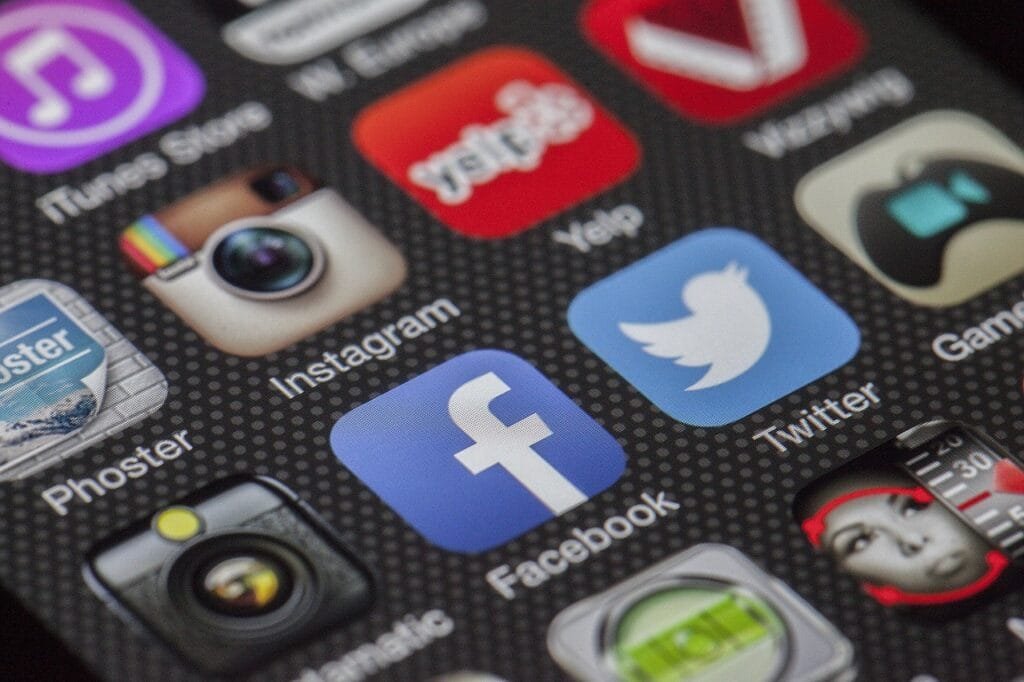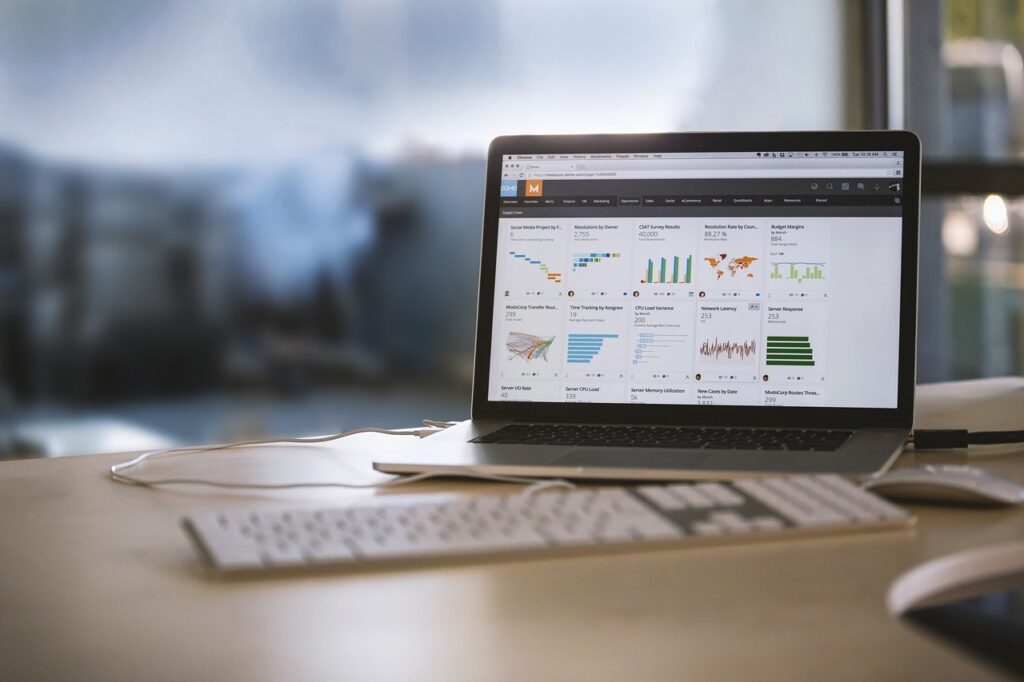Importance of Packaging in Marketing
Effective packaging plays a pivotal role in shaping consumer perceptions and driving purchase decisions. As a business leader, understanding the influence of packaging on marketing can enhance your strategy for goods and services.
Influence of Packaging on Consumer Behavior
Packaging is more than just a protective layer for your product; it is a powerful marketing tool. In a 2018 survey, 72% of American consumers indicated that product packaging design influenced their purchase decisions, while 67% stated that the materials used for packaging were also a factor (Meyers). This is because the packaging is typically the first aspect consumers notice while shopping or browsing.
The role of packaging expands beyond aesthetics. Research shows that 82% of consumers are more likely to purchase a product after seeing or holding it in-store. This statistic underscores the necessity of investing in attractive, high-quality packaging for goods and services. A well-designed package can guide consumer choices among multiple options, often acting as a critical differentiator in the marketplace.
| Key Statistic | Percentage |
|---|---|
| Consumers influenced by packaging design | 72% |
| Consumers influenced by packaging materials | 67% |
| Consumers likely to purchase after seeing/holding the product | 82% |
Creating a Lasting First Impression
First impressions matter significantly in the realm of marketing. The packaging of your product can create a memorable experience for your consumers. For instance, the iconic shape and design of Coca-Cola’s contour bottle form a distinctive silhouette that enhances brand loyalty and recall. Packaging effectively serves as a silent sales tool, reinforcing brand identity and promoting brand awareness.
With 72% of Americans agreeing that packaging influences their purchasing decisions (Fishbowl Inventory), it’s clear that the packaging not only needs to protect the product but also resonate with consumers’ emotions.
Incorporating thoughtful design elements, clear messaging, and appealing branding can elevate your packaging strategy. As you refine your marketing plan, consider how the packaging of goods and services can communicate your values, differentiate your offerings, and create a positive consumer experience. For further insights on packaging strategies and consumer behavior, explore our other articles such as branding goods and services and promoting goods and services.
Design Elements of Effective Packaging
Effective packaging goes beyond mere protection of goods; it plays a crucial role in marketing strategies. You must consider design elements like colors, fonts, graphics, shape, and structural design. These elements not only grab attention but also communicate brand values and influence consumer perceptions.
Use of Colors, Fonts, and Graphics
Colors, fonts, and graphics are pivotal in the packaging design process. They resonate with consumers and significantly influence their emotions and perceptions. Approximately 90% of buyers make snap judgments based on color, highlighting its strong impact on consumer decision-making (Brandwell).
For example, premium chocolate brands typically employ deep, rich colors and elegant fonts to create an immediate association with luxury, positioning their products as high-end choices (Meyers). Here’s a table illustrating color associations with consumer emotions:
| Color | Emotion/Association |
|---|---|
| Red | Excitement, urgency |
| Blue | Trust, calmness |
| Green | Health, eco-friendliness |
| Black | Luxury, sophistication |
| Yellow | Happiness, optimism |
Incorporating visual elements that align with your brand identity fosters a connection with your target market. High-quality graphics can enhance the perceived value of your product, making it more appealing to consumers.
Shape and Structural Design
The shape of packaging is another critical aspect that can influence consumer behavior. Ergonomic designs facilitating easy handling, opening, and pouring tend to engage users more effectively. Research indicates that consumers prefer unique shapes for luxury items, while practical, budget-friendly products usually come in square or rectangular packaging (Brandwell).
Here’s a breakdown of shapes and their associations in consumer perception:
| Shape | Association |
|---|---|
| Round | Approachability, friendliness |
| Square/Rectangular | Practicality, stability |
| Unique/Irregular | Luxury, exclusivity |
The structural design not only supports branding but also enhances the user experience. Think about using high-quality materials such as glass, which imply luxury, or recycled materials, which signify eco-friendliness (Brandwell). Your packaging serves multiple functions—protecting the product, conveying information, and acting as a silent salesperson.
In summary, paying attention to colors, fonts, graphics, and shape can significantly impact your packaging of goods and services, enhancing consumer perception and boosting sales. For a more detailed exploration of how packaging can influence marketing strategies, consider reviewing our articles on advertising goods and services and branding goods and services.
Enhancing User Experience through Packaging
Packaging is not merely a protective barrier; it plays a vital role in enhancing user experience. By focusing on convenience, functionality, and expressing brand identity, you can significantly impact consumer perception and loyalty.
Emphasizing Convenience and Functionality
The design of your packaging should prioritize convenience to enhance the overall user experience. Functional design elements such as easy-open seals, ergonomic shapes, and resealable features contribute to positive interactions with your product. Studies indicate that packaging that emphasizes ease of use directly influences repeat purchases, making it an essential consideration for your marketing strategy (Meyers).
Consider the following features that can enhance convenience:
| Feature | Benefit |
|---|---|
| Easy-Open Seals | Reduces frustration, improves accessibility |
| Ergonomic Shapes | Increases comfort during use, appeals to varying hand sizes |
| Resealable Packaging | Maintains product freshness, encourages repeated usage |
By incorporating these features, your packaging can become a key aspect of customer satisfaction, ultimately driving loyalty towards your brand.
Expressing Brand Identity and Values
Packaging serves as a canvas for expressing your brand’s identity and values. The materials and design choices you make communicate your commitment to quality and sustainability. For instance, utilizing sustainable and recyclable materials can resonate with environmentally conscious consumers, aligning your brand with responsible practices (Meyers).
Incorporate the following strategies to express your brand identity:
| Strategy | Explanation |
|---|---|
| Material Selection | High-quality materials like glass imply luxury and value; recycled cardboard indicates eco-friendliness. |
| Color and Graphics | Use colors and graphics that resonate with your target audience. For example, rich colors can evoke a sense of luxury. (Meyers) |
| Unique Design Elements | Create distinctive shapes or designs that differentiate your product, similar to the iconic Coca-Cola contour bottle that contributes to brand loyalty (Meyers). |
A strong, consistent brand message conveyed through packaging not only attracts consumers but also fosters long-term relationships, contributing to overall success in the marketing of goods and services. For a deeper understanding of these concepts, explore related topics such as branding goods and services and consumer behavior towards goods and services.
Environmental Impact of Packaging
The packaging of goods and services plays a significant role in marketing, but it also has profound environmental implications. Understanding these impacts is crucial for CEOs, CMOs, founders, and business owners who aim to align their marketing strategies with sustainable practices.
Challenges with Non-Recyclable Packaging
Many packaging materials used today are designed for single-use purposes, which presents a considerable recycling challenge. In the US, more than 63 percent of municipal solid waste generated in 2014 was comprised of packaging materials. Alarmingly, only 35 percent (approximately 89 million tons) of this waste was recycled or composted (FoodPrint).
This inefficiency in recycling contributes to the escalating problem of waste disposal. Non-recyclable packaging often ends up in landfills, incinerated or, worse, as litter in waterways, leading to significant environmental degradation.
To address these challenges, incorporating sustainable packaging solutions into your marketing strategy can enhance your brand image while contributing positively to the environment.
| Packaging Waste Statistics | Numbers |
|---|---|
| Total Municipal Solid Waste (2014) | 258 million tons |
| Percent that was Packaging Materials | 63% |
| Amount Recycled or Composted | 35% (89 million tons) |
Effect of Packaging on Plastic Pollution
Plastic pollution has reached alarming levels, as much of the food packaging produced is not recycled and eventually becomes litter in oceans and other bodies of water. The United Nations has termed plastic pollution in oceans a “planetary crisis,” due to the abundance of packaging, particularly plastic, found in these ecosystems (FoodPrint).
The repercussions of this pollution extend beyond aesthetics; plastic waste poses severe threats to marine life. Animals often mistake plastic for food, leading to ingestion, or they become entangled in larger pieces of waste. Plastics have been identified in various marine species, including sea birds and sea turtles, demonstrating the extensive impact of plastic packaging on wildlife (FoodPrint).
This situation emphasizes the urgent need for businesses to rethink packaging options. Transitioning to eco-friendly materials can mitigate the environmental crisis while enhancing your company’s reputation and aligning with consumer preferences for sustainable practices.
Considering these challenges with non-recyclable packaging and the broader impact of plastic pollution is vital when strategizing the packaging of your goods and services. To explore sustainable options further, check our section on sustainable packaging strategies.
Types of Packaging Materials
Understanding the different types of packaging materials is essential for effectively marketing your products. Each category serves a specific purpose and plays a vital role in the overall packaging strategy for your goods and services. The major classifications include primary, secondary, tertiary, and ancillary packaging materials.
Primary Packaging Materials
Primary packaging materials are the first layer of packaging that directly contains the product. These materials are crucial for protecting the product, providing information, and enhancing brand visibility. Here are some common examples of primary packaging materials:
| Primary Packaging Materials |
|---|
| Laminated pouches |
| Plastic containers |
| Thermoformed products |
| Tin cans |
| Parchment paper |
| Paper bags |
| Lamitubes |
| Monocartons |
| Retort pouches |
| Paper-foil laminate |
| Composite cans |
| Glass containers |
| Shrink wrap |
| Cling film |
| Woven sacks |
| Jute bags |
| Intermediate bulk containers |
| Bubble wrap |
Each of these materials plays a significant role in maintaining product integrity and brand identity. For more information about different aspects of goods and services, visit our articles on goods and services in marketing and branding goods and services.
Secondary Packaging Materials
Secondary packaging materials come into play when products are delivered in bulk. These materials facilitate easier handling, storage, and transportation of products. Common examples include:
| Secondary Packaging Materials |
|---|
| Plastic crates |
| Plastic trays |
| EPS trays |
| Wooden crates |
These packaging types provide an additional layer of protection and organization, making them ideal for warehouse storage and distribution. They are especially useful when dealing with larger quantities of goods. For additional insights on delivery and distribution strategies, see our link on distribution of goods and services.
Tertiary Packaging Materials
Tertiary packaging materials are used primarily for transportation and shipping. Their main purpose is to provide an extra layer of safety to protect products from damage during transit. Typical materials in this category include:
| Tertiary Packaging Materials |
|---|
| Corrugated fiberboard |
| Wooden containers |
| Wooden pallets |
| Plastic pallets |
These materials are critical in ensuring the safe delivery of products to retailers or consumers, reducing the risk of damage from bumps and jolts during transportation. To delve deeper into marketing strategies that involve logistics and transportation, refer to our section on marketing strategy for goods and services.
By carefully choosing the right types of packaging materials, you can effectively enhance the marketing value of your products while meeting consumer expectations for quality and functionality.
Consumer Perception and Packaging
Understanding consumer perception is crucial when developing effective marketing strategies for your goods and services. Packaging serves not only as a protective enclosure for your products but also as a powerful marketing tool.
Impact of Color and Shape on Consumer Behavior
The color and shape of packaging have a significant influence on consumer choices. In fact, approximately 90% of buyers form snap judgments based on color, highlighting its critical role in decision-making (Brandwell). Colors evoke emotions and carry meanings; for example, deep, rich colors are often associated with luxury, as seen in premium chocolate brands that use elegant fonts and designs to create an immediate sense of opulence.
Moreover, the shape of your packaging affects usability and perception. Studies show that consumers prefer ergonomic designs that are easy to handle and open. Unique shapes are frequently linked to luxury products, while square packaging typically denotes practicality and economy (Brandwell).
Here is a concise breakdown of effective color and shape strategies:
| Color | Association |
|---|---|
| Red | Excitement, Passion |
| Blue | Trust, Dependability |
| Green | Health, Environment |
| Black | Luxury, Sophistication |
| Shape | Perception |
|---|---|
| Ergonomic | Convenience |
| Unique | Luxury |
| Square | Budget-Friendly |
Preference for High-Quality Packaging
Consumers overwhelmingly favor high-quality packaging, which significantly influences their purchase decisions. Packaging that uses materials such as glass suggests luxury and wealth, while recycled cardboard communicates eco-friendliness. A survey showed that 72% of Americans believe packaging plays a vital role in their purchasing choices.
Opting for quality packaging not only enhances brand perception but also reinforces your brand identity. By investing in premium packaging solutions that reflect your brand values, you can build brand loyalty and boost market presence. For a deeper insight into methods for promoting your goods and services, refer to our resource on promoting goods and services.
High-quality packaging is not just an aesthetic choice but a strategic decision that communicates your brand’s commitment to value and customer satisfaction.
Sustainable Packaging Strategies
Growing Demand for Eco-Friendly Packaging
The demand for eco-friendly packaging has surged in recent years, reflecting consumers’ increasing awareness of environmental issues. The sustainable packaging industry is projected to grow from $371.4 billion in 2022 to $737.6 billion by 2030 and is driven by sustainability trends in consumer purchasing choices (Fishbowl Inventory). Consumers are leaning towards brands that emphasize sustainability in their practices, with recyclable packaging leading the recycled materials market (Brandwell).
Businesses are recognizing the importance of adapting to this shift in consumer preference. By implementing sustainable packaging solutions, companies not only meet market demands but also position themselves as responsible and forward-thinking. If you are part of the management team exploring innovative approaches, consider how eco-friendly options can enhance your brand’s reputation.
Benefits of Adopting Sustainable Packaging
Implementing sustainable packaging strategies can yield numerous benefits for businesses. Not only does it contribute positively to the environment, but it can also enhance a company’s brand image and support financial performance. Here are some key advantages:
| Benefit | Description |
|---|---|
| Brand Image Enhancement | Utilizing sustainable materials demonstrates a commitment to environmental stewardship, appealing to eco-conscious consumers. |
| Cost Reduction | Sustainable packaging solutions often optimize material use, potentially reducing costs in production and shipping. |
| Increased Productivity | Adopting innovative packaging practices can streamline operations and improve logistics, leading to higher efficiency. |
| Profit Growth | Eco-friendly practices can attract a larger customer base, ultimately boosting sales and profitability. |
Moreover, addressing the challenge of plastic waste is crucial. Plastic waste remains a major contributor to environmental problems, and effective packaging can significantly mitigate these issues. For companies, it is imperative to strike a balance between meeting consumer expectations and adopting practices that lessen environmental impact. To learn more about effective approaches, explore our articles on goods and services in marketing and branding goods and services.
Innovative Packaging Strategies
When it comes to the packaging of goods and services, leveraging innovative strategies can significantly enhance your product’s visibility and appeal. Two key areas to focus on are brand messaging on packaging and incorporating interactive packaging elements.
Brand Messaging on Packaging
Brand messaging is a crucial aspect of your packaging strategy. Effective packaging serves as a silent sales tool that influences purchase decisions, boosts brand awareness, and fosters customer loyalty. Research indicates that 72% of Americans agree that packaging influences their buying choices.
One successful approach is to share your brand story directly on the packaging. This can effectively communicate your brand’s values, history, and mission, creating an emotional bond with customers. For instance, TOMS, a footwear company, prominently shares its “One for One” mission on its packaging, reinforcing the connection between the product and its cause.
Consider using unique designs and materials to stand out in crowded markets. The cylindrical tube used by Pringles for its potato chips and Coca-Cola’s iconic contour bottle design are excellent examples of how creative packaging can differentiate a brand from its competitors (Fishbowl Inventory). To ensure your packaging resonates with your target audience, focus on a strong, cohesive brand identity across all elements.
Interactive Packaging Elements
Interactive packaging creates an engaging experience for consumers, encouraging them to connect with a product in a meaningful way. By integrating elements that allow customers to interact with the packaging—such as QR codes, augmented reality (AR) features, or unique unboxing experiences—you can enhance customer satisfaction and loyalty.
For example, a QR code could lead to a video demonstrating the use of the product, or an AR feature could enable customers to visualize various product applications. These interactive elements not only provide additional value but also encourage sharing on social media platforms, further amplifying your marketing reach.
According to a study, brands that incorporate interactive elements in their packaging report increased customer engagement and higher sales conversion rates. The result is a heightened sense of excitement around the product, leading to memorable customer experiences and fostering repeat purchases.
Investing in innovative packaging strategies can transform your product’s market presence. Explore the impact of effective packaging design, branding, and messaging as you navigate the complexities of marketing your goods and services. For further insights, consider reviewing our articles on branding goods and services and promoting goods and services to enhance your overall marketing strategy.
Ensuring Product Safety through Packaging
Ensuring the safety of products through effective packaging is crucial for maintaining customer satisfaction and loyalty. This section will cover two essential aspects: the importance of transportation simulation tests and the international standards for packaging testing.
Importance of Transportation Simulation Tests
One of the fundamental requirements of packaging is to maintain the integrity of the product throughout the transportation cycle. Packaging must endure various stresses and conditions that can occur during shipping and handling. To assess its durability, it’s important to conduct transportation simulation tests in laboratory settings (Quora).
These tests evaluate how well the packaging will perform under realistic shipping conditions. They help to identify potential weaknesses that could lead to damage. This includes evaluating the packaging’s ability to withstand impacts, vibrations, and changes in temperature and humidity. By simulating these conditions, companies can ensure their packaging protects the product effectively and reaches the end consumer with minimal visible damage.
| Test Type | Purpose |
|---|---|
| Impact Tests | Assess packaging resistance to drops and shocks |
| Vibration Tests | Evaluate the effects of continuous shaking |
| Compression Tests | Measure the ability to withstand stacking |
| Temperature & Humidity | Test durability under varying environmental conditions |
International Standards for Packaging Testing
Various international standards exist to guide companies in conducting transportation simulation tests. These standards ensure that packaging is fit for specific product types and transportation methods (Quora). Engineers and laboratory technicians are involved in the evaluation process, utilizing a range of metrics to ensure the packaging’s effectiveness.
Key assessments include visible inspections, measurements of seal strengths, package opening performance tests, and abrasion resistance evaluations. These processes help determine if the packaging can function properly under real-world conditions while offering protection against physical and environmental factors.
By adhering to these international standards, businesses can ensure their packaging meets regulatory requirements and quality expectations, which is essential for the safe delivery of goods. For more on effective strategies in marketing your goods and services, be sure to explore our related articles.




















